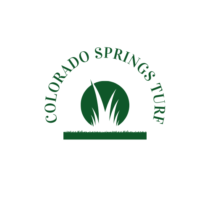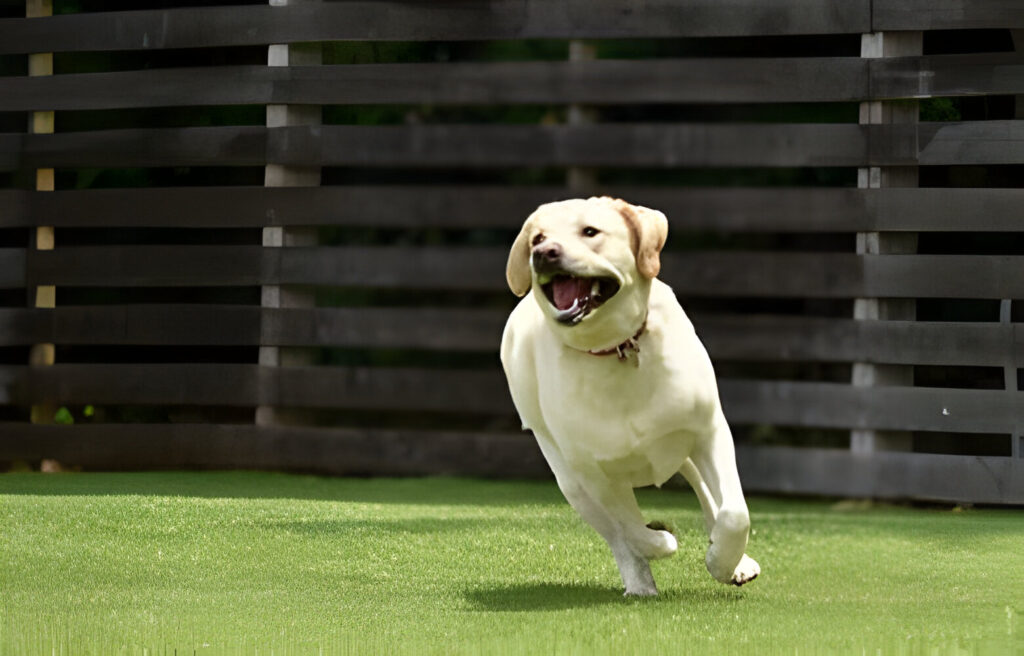Introduction
Artificial lawns have become a game-changer in the world of landscaping. These synthetic grass solutions are gaining traction among homeowners who seek both aesthetic appeal and practicality. Instead of spending countless hours maintaining natural grass, more people are opting for the convenience and beauty of artificial turf.
Key takeaway: Artificial lawns offer numerous advantages that can transform your yard into a beautiful, low-maintenance oasis. From water conservation to durability, these benefits make artificial lawns an appealing choice for creating an inviting and sustainable outdoor space.
By adopting an artificial lawn, you can enjoy a lush, green yard year-round without the constant upkeep associated with natural grass.
1. Low Maintenance Requirements
Artificial lawns significantly reduce lawn maintenance time and costs, offering a hassle-free alternative to natural grass. Traditional grass lawns demand regular mowing, watering, fertilizing, and weeding to maintain their appearance. This upkeep not only consumes time but also requires financial investment in tools, fertilizers, and water.
With artificial lawns, the need for such intensive care is eliminated:
- Mowing: Synthetic turf maintains its height and appearance without the necessity of mowing.
- Watering: Artificial grass does not require regular watering, which conserves water and reduces utility bills.
- Fertilizing: There is no need for chemical fertilizers to keep the lawn green and lush.
- Weeding: The dense construction and materials of artificial lawns naturally inhibit weed growth.
For homeowners with busy lifestyles, the low maintenance nature of artificial lawns translates into substantial time savings. By shifting from natural to synthetic turf, homeowners can reclaim approximately 70 hours per year previously spent on lawn care activities. This time can be redirected towards other personal or family activities, making artificial lawns an excellent choice for those seeking convenience without compromising on aesthetics.
2. Water Conservation Benefits
Artificial lawns offer significant water conservation benefits, particularly in drought-prone areas. Natural grass requires substantial watering to maintain its lush appearance, especially in regions like Southern California where water scarcity is a pressing issue. By switching to synthetic turf, homeowners can drastically cut down on their water usage.
Key Benefits:
- Reduction in Water Usage: Natural lawns can consume thousands of gallons of water annually. Artificial lawns eliminate this need entirely, making them an ideal choice for areas experiencing drought conditions.
- Cost Savings: The decrease in water consumption translates to noticeable savings on utility bills. Reduced water needs mean less spending on irrigation systems and lower monthly water costs.
- Compliance with Restrictions: Many regions impose strict water usage restrictions during periods of drought. Homeowners with artificial lawns avoid the risk of incurring fines for exceeding water consumption limits, ensuring compliance with local regulations.
Example:
In Southern California, where drought conditions are frequent, artificial lawns have become increasingly popular. Homeowners save not only on their water bills but also contribute positively to the community’s efforts to conserve precious water resources.
Switching to synthetic turf allows homeowners to enjoy a beautiful yard while being environmentally responsible.
3. Durability and Longevity of Synthetic Turf
Artificial lawns are known for their impressive durability and a long-lasting synthetic turf lifespan, which can range from 12 to 25 years for high-quality products. This longevity significantly surpasses the life expectancy of natural grass, which often requires frequent reseeding or complete lawn replacement within a few years.
Key Features:
- Resilience Against Heavy Foot Traffic: Synthetic turf is designed to withstand constant use without showing signs of wear and tear. Families with children or pets, as well as areas with high usage such as sports fields and playgrounds, can benefit from its robust nature.
- Extreme Weather Conditions: Whether facing scorching heat or freezing temperatures, artificial grass maintains its integrity. It does not suffer from drought-induced browning or frost damage, making it suitable for various climates.
Example:
Consider a homeowner in a region with harsh winters and hot summers. Natural grass would struggle to survive such extreme variations, often requiring significant maintenance and care. In contrast, synthetic turf endures these conditions effortlessly while maintaining its appearance.
By opting for durable and long-lasting synthetic turf, homeowners invest in a resilient lawn that remains attractive and functional over many years.
4. Pest and Weed Control Advantages
Artificial lawns provide a pest control without chemicals solution that naturally deters unwanted insects and weeds. The synthetic materials used in these lawns create an inhospitable environment for pests, eliminating the need for harmful pesticides. This ensures a safer, more eco-friendly yard.
Key Benefits:
- Weed-Free Landscaping Solution: The tightly woven structure of artificial grass prevents weed seeds from taking root. This drastically reduces the occurrence of weeds, sparing homeowners from constant weeding or the use of herbicides.
- Pest Deterrent: Unlike natural grass, synthetic turf does not provide organic material that pests feed on. This discourages insects like ants, beetles, and grubs from infesting your yard.
- Chemical-Free Maintenance: By minimizing the need for pesticides and herbicides, artificial lawns contribute to a healthier living environment. Families and pets can enjoy their outdoor spaces without exposure to potentially toxic chemicals.
These features make artificial lawns an excellent choice for those seeking a low-maintenance, environmentally friendly alternative to traditional grass yards.
5. Safety Features for Kids and Pets
When considering landscaping options, safety is a top priority for families with children and pets. Modern synthetic turf products excel in this area, offering a wide range of safety features that make them an ideal choice.
Key Safety Features:
- Anti-Bacterial Properties: Many high-quality artificial grass products incorporate anti-bacterial agents to inhibit the growth of harmful bacteria. This ensures a cleaner and healthier play area for kids and pets.
- Even Surface: The uniform surface of artificial lawns minimizes the risk of trips and falls, providing a safer playground for children. Unlike natural grass, which can develop uneven patches, synthetic turf remains consistently flat and smooth.
- Non-Toxic Materials: Child-safe artificial grass is made from non-toxic materials that do not release harmful chemicals into the environment. This makes it a pet-friendly landscaping option as well.
- Allergen-Free: Artificial lawns do not harbor pollen or other allergens commonly found in natural grass, reducing the risk of allergic reactions among sensitive family members.
Example: For pet owners, synthetic turf can include specialized drainage systems to handle pet waste effectively. This prevents unpleasant odors and keeps the area sanitary.
With these features, artificial lawns provide a safe and secure environment, allowing families to enjoy their outdoor spaces without worry.
6. Consistent Appearance Year-Round
High-quality artificial grasses ensure vibrant colors all season long, eliminating common issues like brown patches or bare spots. This consistent appearance is one of the standout benefits of synthetic turf, making it a favorite among homeowners who prioritize aesthetics.
Benefits of Consistent Appearance with Artificial Grass
- Year-round lush appearance: Unlike natural grass that can suffer from drought, frost, or heavy foot traffic, artificial lawns maintain their lush look regardless of weather conditions. This means your yard will always look green and inviting.
- Enhanced curb appeal: The uniformity and vibrancy of artificial grass significantly boost curb appeal. A well-maintained appearance can enhance the overall visual charm of your property, potentially increasing its value.
- No seasonal hassle: Traditional lawns require seasonal care to keep them looking their best—fertilizing in the spring, watering in the summer, and raking leaves in the fall. Artificial lawns eliminate these tasks, providing a hassle-free solution for maintaining a beautiful yard year-round.
In addition to aesthetic benefits, the durability of synthetic turf ensures it remains visually appealing despite heavy use. Whether it’s kids playing or pets running around, your lawn will retain its pristine condition without needing constant repairs or reseeding.
7. Environmental Benefits Beyond Aesthetics
Artificial lawns contribute significantly to eco-friendly landscaping choices. One of the primary ways they achieve this is by reducing the reliance on gas-powered lawn equipment, such as mowers and trimmers, which are typically required for maintaining natural grass lawns. This reduction in equipment use directly translates to a decrease in air pollution.
How Synthetic Turf Reduces Carbon Footprint
1. Elimination of Gas-Powered Equipment
Traditional lawn care often involves the use of gas-powered equipment that emits harmful pollutants. By switching to artificial grass, homeowners can cut down on these emissions, contributing to cleaner air.
2. No Need for Chemical Treatments
With synthetic turf, there’s no requirement for pesticides or fertilizers that can release volatile organic compounds (VOCs) into the atmosphere. This reduces not only air pollution but also prevents chemical runoff into waterways.
3. Water Conservation
As previously discussed, artificial lawns do not need watering, saving significant amounts of water annually. This conservation effort helps maintain local water supplies and reduces the energy needed to treat and pump water.
Broader Environmental Impact
The environmental benefits extend beyond just reducing your carbon footprint:
- Lower Greenhouse Gas Emissions: Manufacturing processes for artificial grass have improved over time, becoming more energy-efficient and sustainable.
- Waste Reduction: High-quality synthetic turfs are durable and have a long lifespan (12 to 25 years), meaning less frequent replacement and reduced waste generation.
By adopting artificial lawns, homeowners not only enhance their yard’s aesthetic appeal but also make a strong commitment to environmental stewardship. The shift away from traditional lawn care methods provides an effective way to reduce pollution and conserve natural resources.
Conclusion: Transform Your Yard with Artificial Lawns!
Artificial lawns are a great option for modern landscaping. They require very little maintenance, save a lot of water, and are extremely durable. This makes them a practical solution for busy homeowners.
One of the advantages of artificial lawns is that they naturally keep pests and weeds away, reducing the need for harmful chemicals. Additionally, safety features ensure that children and pets can enjoy the yard without any health risks.
Another benefit is the year-round vibrant appearance they provide, which enhances your home’s curb appeal. Furthermore, by using artificial lawns instead of gas-powered equipment for maintenance, we can reduce air pollution and contribute to a greener planet.
Considering all these benefits, homeowners should definitely consider artificial lawns as a viable option for transforming their landscaping. It’s an environmentally friendly choice that beautifully combines aesthetics and practicality.

